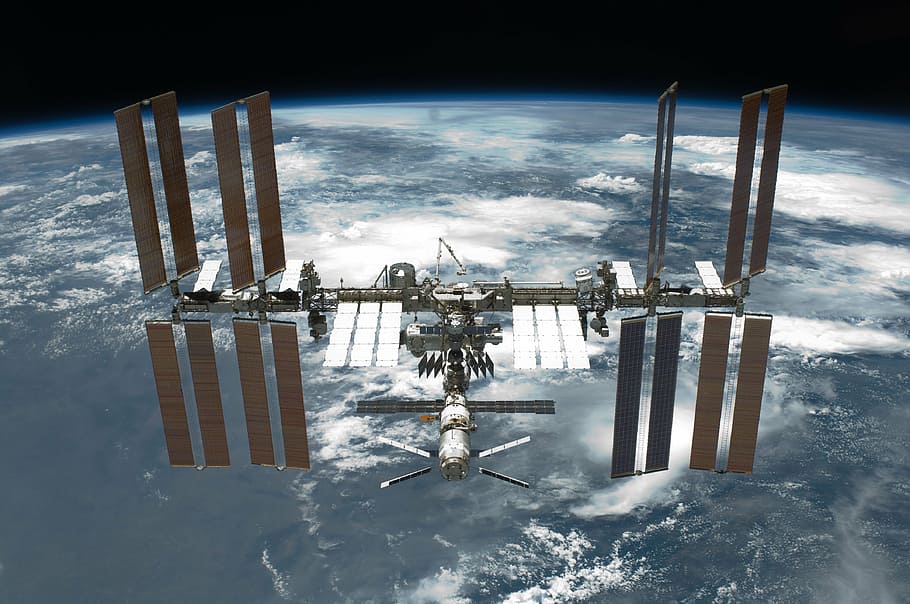The International Space Station (ISS) stands as a remarkable symbol of what humanity can achieve through global cooperation. This space laboratory, orbiting Earth at an altitude of approximately 400 kilometers, serves as a hub for space research and scientific experiments. With contributions from space agencies like NASA, Roscosmos, ESA, and JAXA, the ISS represents an international partnership that transcends political and cultural boundaries.
History and development of the ISS
The concept of the International Space Station emerged from a series of joint ventures among nations with a keen interest in space exploration. Initial plans were proposed in the early 1980s, with the aim to build an orbital laboratory that could support long-term human presence in space. The construction of the ISS began in 1998, with the launch of the Zarya module by Roscosmos. Over the years, additional modules from various countries were added, culminating in a fully functional spacecraft system.
The role of international collaboration
The success of the ISS is largely due to the international collaboration among participating nations. This partnership includes not only the international space agencies but also academic institutions and private sector companies. The collaborative effort ensures the sharing of resources, knowledge, and technology, making the ISS a true global cooperation project.
Scientific contributions and research
One of the primary objectives of the International Space Station is to conduct scientific experiments that are not possible on Earth. The microgravity environment of the ISS allows researchers to study space science phenomena such as fluid dynamics, combustion, and material science in unique ways. These experiments have led to significant scientific advancements and have contributed to our understanding of basic physical processes.
Technological innovations
The ISS is a testament to human ingenuity and technological innovation. The development and maintenance of the ISS have driven advancements in aerospace engineering and space technology. Innovations in life support systems, spacecraft docking mechanisms, and radiation shielding have been directly influenced by the needs of the International Space Station. These technologies not only benefit space exploration but also have applications on Earth.
Human presence in space
The International Space Station provides a unique environment for studying the effects of long-term human spaceflight. Astronauts aboard the ISS conduct research on how microgravity affects the human body, which is crucial for future missions to the Moon and Mars. This research helps us understand how to sustain human health and performance in space, paving the way for longer missions and potential long-term space habitation.
Milestones and achievements
Since its inception, the ISS has achieved numerous milestones in space exploration. It has supported over 240 individuals from 19 countries, conducted thousands of scientific investigations, and served as a testbed for new technologies. These space achievements highlight the ISS’s role as a beacon of international collaboration and a catalyst for scientific and technological progress.
Benefits to humanity
The impact of the ISS extends beyond space research. The scientific advancements and technological innovations developed for the ISS have applications in medicine, materials science, and environmental monitoring. Additionally, the educational outreach programs associated with the ISS inspire the next generation of scientists, engineers, and explorers, emphasizing the educational impact of space missions.
Future prospects
Looking ahead, the future of the ISS and space station future projects is bright. Plans are underway to extend the operational life of the International Space Station, incorporate new modules, and enhance its research capabilities. Additionally, next-generation space stations are being conceptualized, with the goal of supporting more advanced research and international collaboration. These future missions will continue to push the boundaries of what is possible in space exploration.
Sustainability in space exploration
The International Space Station also plays a crucial role in promoting sustainable space exploration. Research conducted on the ISS contributes to the development of sustainable technologies and practices that will be essential for long-term missions. This includes advancements in life support systems, waste recycling, and energy efficiency, all of which are critical for ensuring the sustainability of human presence in space.
The International Space Station is more than just a space laboratory; it is a symbol of international partnership and a testament to what can be achieved through global cooperation. The ISS has advanced our understanding of space science, driven technological innovation, and inspired countless individuals around the world. As we look to the future, the legacy of the ISS will continue to shape the course of space exploration and highlight the importance of working together for the betterment of humanity.


